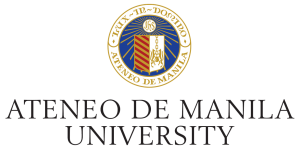-
 Maria Lourdes SantosApril 10, 2014 at 1:55 am #1278
Maria Lourdes SantosApril 10, 2014 at 1:55 am #1278One of the primary issues tackled was that of the importance of the role of Preventive and Integrative Health Programs in our country, especially with respect to those affected by typhoon Haiyan/Yolanda. From the perspective of the government, budget wise, preventive healthcare is not a priority. Thus, various agencies (Sarilayans, PKKK Women, Lilak) have taken an active role in promoting community-based, preventive and integrative health advocacies; education and advocacy campaigns come in the form of healthy feeding projects, promoting the value of using locally-produced/grown vegetables, with respect to nutrition, availability, accessibility and taste. The participation of LGUs and the DOH in areas of preventive and promotive healthcare was also put into focus. Various health programs such as the use of the permaculture approach in using organic vegetable gardens (Earth Village Project), the building of barangay health stations in certain municipalities, programs promoting maternal and child health (Buntis Congress), and housing and urban planning projects were mentioned, however the question of what other collaboration programs are in place to promote healthy lifestyles still remains. The design of health facilities in the community level was also put into focus looking at the post-Yolanda situation, and it was noted that there is a burgeoning need for such facilities to be typhoon resilient and able to cope with the need for emergency response. In line with this, the Greener and Safer Hospitals was mentioned as one of the measures being proposed and advocated by the regional organization Healthcare Without Harm (HCWH) and considered by the DOH.
The general situation and rehabilitation efforts in the typhoon stricken areas have also been discussed. In the aftermath of typhoon Yolanda, MAG (Medical Action Group) had, in support of its member doctors and health professionals, conducted a series of medical missions, psychosocial support activities, and relief distribution to the survivors of island barangays of Tubabao Macani, and Victory in Guiuan, Eastern Samar, which are, to date, still ongoing. The various problems plaguing the areas of Samar (Marabut) and Eastern Samar (Giporlos, Quinapondan, Salcedo) and the current rehabilitation efforts were also mentioned; 1. Food Security, which addressed through the initiation of planting projects and the delivery of farming equipment. 2. Water, Sanitation and Hygiene, which thus entails problems in the procurement of clean and potable water; the restoration or pipelines, and the usage of purification tablets were being undertaken in some areas. 3. Health: The Health Information System together with health infrastructure was badly damaged, thus repairs are being undertaken courtesy of INGOs/NGOs, together with the installation of temporary health facilities and tent hospitals. Health Human Resources have resumed regular activities, except for damaged equipment and facilities which have been totally destroyed. Mental health problems have increased, but are however being treated by volunteer psychiatrists from HFI, and through psychosocial interventions conducted by various INGOs/NGOs. Also, problems with mosquitoes and some reported cases of dengue have been identified, however no programs to address these problems have yet been encountered.
The condition of health facilities in Eastern Samar were also taken into account. It was observed that the Yolanda crisis has exposed certain substandard qualities of these health facilities; lack of funding, outdated equipment and materials, or lack thereof, for the construction and maintenance of health infrastructures. Particular mention was made of the necessity and opportunity for the DOH to show its help and support to the affected health system, and for it to show the worth of the Integrated Health System that it is currently running. The question of dialectics between Development Sponsors and the needs of the people were also brought up, and that it was imperative that the latter dictate the flow of how the reconstruction of Barangay Health Services should be done. The relationship between the two was brought up due to the possibility of the LGUs not being able to repair such facilities. Whether such development sponsors had given concrete commitment remains to be seen. However, it was mentioned that the repair of RHU and BHS are mainly sponsored by INGOs/NGOs, and some under the quickfix of the DOH under the Health Facility Enhancement Program.
-
|
You must be logged in to reply to this topic.



